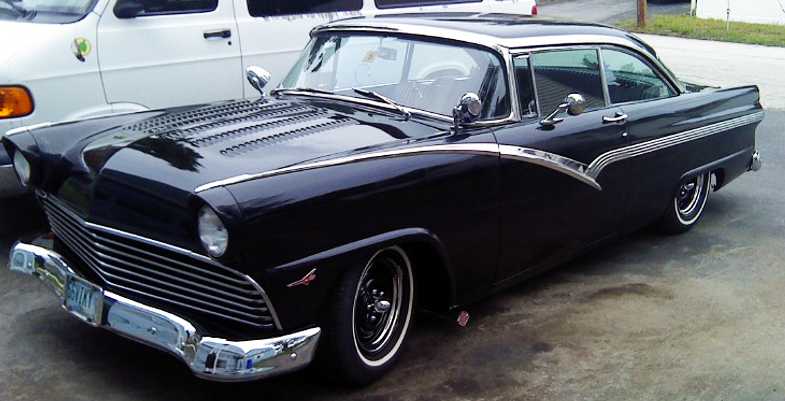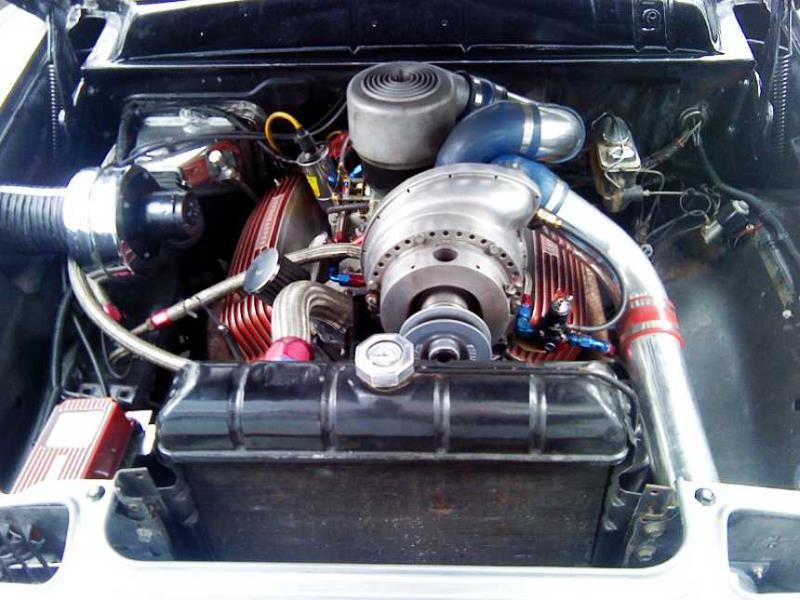|
Group: Forum Members
Last Active: Last Year
Posts: 357,
Visits: 25.5K
|
This problem is RESOLVED! The continuation of the discussion can be found in this thread: http://forums.y-blocksforever.com/Topic83672.aspxThe long and short of it, though, is that replacing the wiring inside the distributor, from distributor to coil, and from resistor to coil fixed all of the symptoms.
1954 Crestline Victoria 312 4-bbl, 3-speed overdrive
|
|
Group: Forum Members
Last Active: Last Year
Posts: 357,
Visits: 25.5K
|
slick56, yes, I have actually installed 3 different new condensers, haha. A bit overkill but I wanted to be sure that wasn't the trouble.
tnguynaford, I have indeed checked the distributor mechanical components out. Took it all apart, cleaned and lubed everything, checked for dwell variation, and everything looked good the whole time.
1954 Crestline Victoria 312 4-bbl, 3-speed overdrive
|
|
Group: Forum Members
Last Active: Last Month
Posts: 460,
Visits: 4.5K
|
Below is a link to Lucas Fault diagnosis manual Have you changed the condenser (capacitor)? " The condenser serves to enhance the spark by greatly increasing the voltage to the input of the ignition coil. It does this through a sudden electrical surge and a high frequency ringing effect, bringing the voltage as high as 300 volts for input to the coil immediately after the ignition points break."
South Australia
|
|
Group: Forum Members
Last Active: 8 Years Ago
Posts: 854,
Visits: 6.0K
|
It's been mentioned before,but double check and make sure your coil is thoroughly grounded to the engine.
 
Paul, Boonville,MO
|
|
Group: Forum Members
Last Active: 12 Years Ago
Posts: 2,
Visits: 17
|
Man I feel your pain on this. I have read thru all the posts and it is being a real pain for sure. Have you checked the distributor for wear. If the bushings or shaft is worn the timing will be very erratic inside the cap creating similar problems you are describing. It makes the points and rotor to be out of whack in random patterns. I have encountered this a couple times before.
Gene
Gene
|
|
Group: Forum Members
Last Active: Last Year
Posts: 357,
Visits: 25.5K
|
Stuey, thanks for the well-wishing! I do not have PCV, just the original road draft tube.
Moonshadow, I looked back through old posts and realized I had already tried that and (surprise!) it made no difference.
Reviewing those old posts was really helpful. There is more consistency than I realized.
Ultimately, I think the best way to describe the trouble is a lack of power at hot idle. Turning on the headlights and putting the engine into gear both put a load on the idling engine, and if it is not making enough power, it will stall, just as a manual trans car will stall if you let the clutch out too quickly without adding any throttle (power).
In order to make power at idle, it is necessary that the right mixture of fuel and air be supplied, that the engine is in good enough condition to compress that mixture at low speed, and that an ignition spark of sufficient strength occurs at the proper time.
The compression test and vacuum readings lead me to believe that the mechanical condition of the engine is good enough to give a quality idle. I have certainly had better performance from an engine with much worse vacuum, compression, etc.
The fuel and air mixture question is hard to answer without a tailpipe sniffer. I see no reason why my carburetor, which is designed specifically for use with this engine, would not be getting the job done. Yet I have noticed that the best idle performance occurs when the throttle plates are open so far as to take the carb into the transition slot zone. Indeed, it is happiest when the mixture screws themselves are nearly seated. I am certain that the passages for the idle circuit are clear, so I cannot account for why the engine will not run with the throttle plates closer to seated, where (the manual says) they belong. If the carb cannot, or doesn't(for reasons I can't detect), put out the needed mixture, the idling engine will not make enough power to handle the load of the charging generator or the transmission.
As for spark strength and timing, I have given the ignition system every excuse to make the best spark it can. I observed the spark out of the coil while cranking last night and it looked exactly the same on the Fairlane as on my Chrysler. I need to try to observe the spark produced by the running engine but am not sure how to go about that without getting zapped. Timing-wise, I have tried over- and under-advancing without discovering a solution to this issue.
2 things give the engine enough power to idle under load: boosting the spark (voltage? Current?) by skipping the resistor, and (over)enriching the fuel mixture. Overenriching the mixture results in a more consistent, even idle, but still not as good an idle as I get when the engine is cool. I have read that a rich mixture is easier to burn than a lean one. Consequently, both of these 2 things point to one ultimate cause of the problem: a weak hot spark. A stronger spark could burn the lean hot mixture rather than misfire.
So why is the spark weak? I don't know. All of the components are new. The points are adjusted properly. There is adequate voltage to the coil (more than 8.5V), and the voltage on the negative side agrees with the dwell meter that good, regular switching is occurring at the points. Adding a jumper wire from the + battery terminal to the input side of the resistor doesn't help. I cannot find a problem.
1954 Crestline Victoria 312 4-bbl, 3-speed overdrive
|
|
Group: Forum Members
Last Active: 2 Weeks Ago
Posts: 443,
Visits: 3.8K
|
good morning folks
just been reading a post from OLDCARMARK re PCV valves. have you got a PCV set up?
just a thought.
the patience of a saint comes to mind.
wishing you well
stuey
|
|
Group: Forum Members
Last Active: 4 minutes ago
Posts: 4.6K,
Visits: 38.4K
|
You can bypass the ignition switch with a jumper wire from the battery positive terminal to the + side of the coil. Then use a couple screw drivers (or a remote start button, if you have one) to jump the starter solnoid. That will eliminate the switch from the equation. Chuck
Y's guys rule!
Looking for McCullouch VS57 brackets and parts. Also looking for 28 Chrysler series 72 parts. And early Hemi parts.
 
MoonShadow, 292 w/McCulloch, 28 Chrysler Roadster, 354 Hemi)
Manchester, New Hampshire
|
|
Group: Forum Members
Last Active: Last Year
Posts: 357,
Visits: 25.5K
|
Installed a new ballast resistor with no change in symptoms.
Installed a brand new Edelbrock 1405 that I borrowed. I warmed the vehicle up to the point of the trouble showing up then swapped the carbs. It behaved the same.
So if it's a fuel delivery problem, then neither the fuel pump, carburetor, or filter can be to blame. Unlikely.
I lightly pressurized the exhaust with the engine hot and carb off to check for crossover leakage into the intake; I could not detect any. That's it for any theory I can come up with pertaining to the mechanical side.
The only part of the ignition system I haven't replaced or re-replaced are the ignition switch and the primary wiring. I have not been able to find any problems with these parts but seeing as I haven't been able to find problems with ANY parts and a problem exists, I guess I'll proceed.
Strongly considering installing a Pertronix ignitor as well. I have no problem with points but if this ends up being something like a string of shoddy condensers (the one part I have no way of testing whatsoever) I'd just as soon quit playing roulette with critical ignition components.
1954 Crestline Victoria 312 4-bbl, 3-speed overdrive
|
|
Group: Forum Members
Last Active: Last Year
Posts: 357,
Visits: 25.5K
|
Made another test loop with no change in symptoms except that I noticed a little bit of missing under light load uphill, low speed. It wasn't until I returned home that I realized I had the vacuum advance disconnected, so at least we know that over-advancing has nothing to do with this.
1954 Crestline Victoria 312 4-bbl, 3-speed overdrive
|